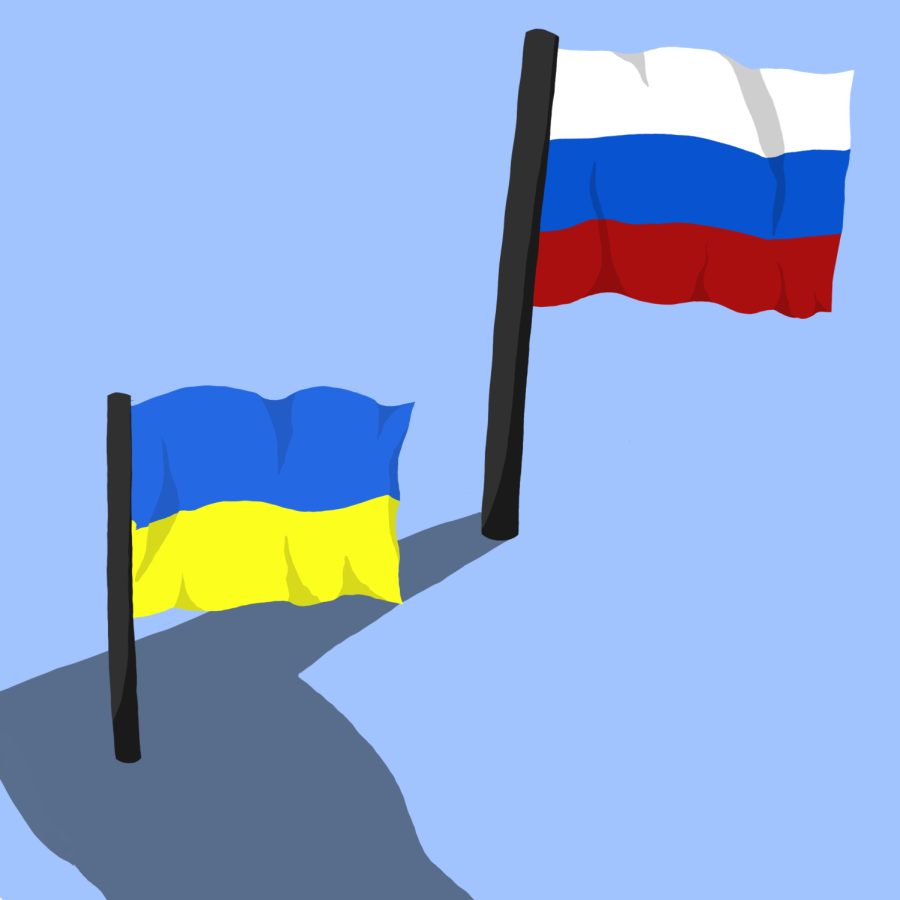Russia and Ukraine crisis explained
February 15, 2022
Currently, Russia has focused close to 130,000 troops along the Ukrainian border, and on Friday, Jack Sullivan, United States National Security Advisor, said a Russian-led attack is imminent. As Russia has increased pressure on Ukrainian borders, Vladimir Putin has continuously dismissed U.S. concerns about a possible invasion. Despite the Kremlin’s sophistries, Moscow has moved military equipment, medical units and equipment — all signs of a country preparing for war. Even as tensions escalate and new updates about the conflict seem to roll in every day, it is important to know the root of the crisis and how it has grown into a catastrophe that could be the largest military conflict in decades.
Where did it start?
First, the conflict goes back to the breakup of the Soviet Union in the early ’90s. The United States and Russia worked with Ukraine to denuclearize the country since it once had the third-largest atomic arsenal in the world. After negotiations, Ukraine returned hundreds of nuclear warheads back to Russia, and in return, Ukraine received security assurances from a potential Russian attack.
The assurances were ignored when Russia invaded Ukraine and annexed the Crimean Peninsula in 2014, following protests in Ukraine that led to the fall of pro-Russian President Viktor Yanukovych. In addition, Putin has a goal to return to the Soviet Union Europe where Ukraine, which was lost in the fall of the USSR, and Russia become one.
Why now?
Developments between Ukraine, the U.S., Europe and Russia mean that Putin will act soon. Chief among them is the election of Ukrainian President, Volodymyr Zelensky, who promised to engage in peace talks with Putin. However, Russia strongly pushed for Zelensky to implement the Minsk agreements which would bring pro-Russian regions back to Ukraine, but allow Russia to grow its influence and control in the region. Obviously, Zelensky declined and sought support from the West, and has actively shown interest in wanting to join NATO, even though the country does not meet the criteria of democracy under the law.
The strong public support for Ukraine to join NATO has made Russia feel as if its political capital and diplomatic leverage are waning. An attack could bolster Russia on the world stage and reignite nationalism within the country just as it did in 2014. Aside from that, Putin views the U.S. withdrawal from Afghanistan, its handling of the coronavirus and the current state of the economy as a weakness that could be beneficial for the Kremlin.
What now?
It is hard to know what could happen if Russia invades. The tension could manifest into a proxy war which would most likely feature some form of cyber warfare. There is also the possibility of Russia seizing regions that could be beneficial for the Kremlin and cutting off Ukraine’s access to waterways, or the more aggressive option: an on-the-ground attack to reclaim the country. However, the latter possibility is the least likely given that such an attack would be economically and militarily taxing for Russia.
Currently, U.S. allies are trying to plan an aggressive and bold response to Russian hostility if Russia were to invade. Some possibilities include an oil and gas embargo, cutting Russia off from its global financial transactions, putting financial sanctions on Russian banks or an export ban on advanced technologies. In addition, the gas pipeline between Germany and Russia, Nord Stream 2, could also be brought to a halt should Russia behave maliciously.
Putin has put himself in a tricky position, especially given the West’s commitment to preserving and emboldening democracy internationally. Assuming the Russian president considers a full-scale risk assessment, a war with Russia seems unlikely.
Russia has demanded that NATO halts its eastern expansion and deny membership to Ukraine, and for NATO to stop troop deployment in countries that joined after 1997. NATO has rejected demands and a diplomatic stalemate could keep the U.S. involved in the East for much longer.








